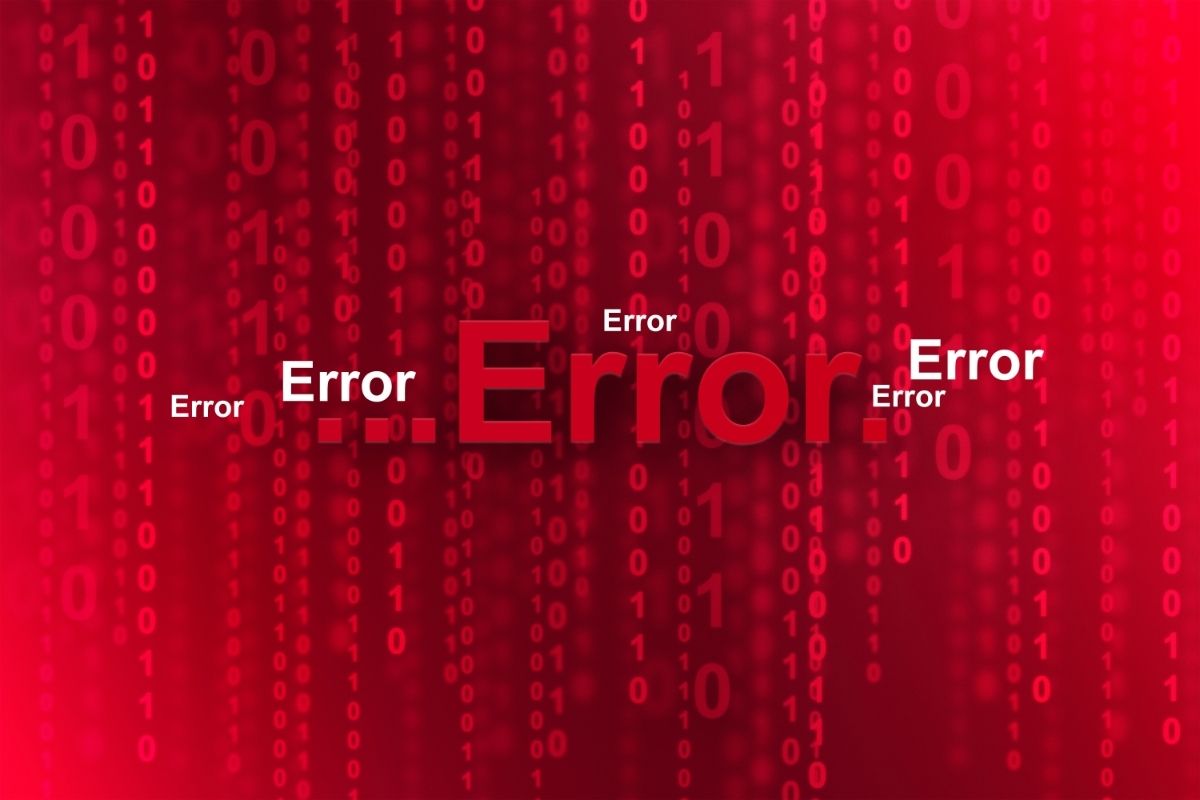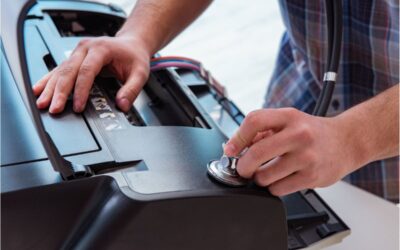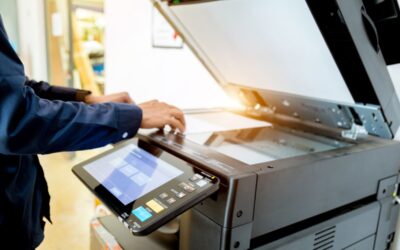However, even the most sophisticated machines can experience hiccups from time to time. When this happens, you’ll often see an error code displayed on the screen, a combination of letters and numbers indicating the problem.
While they might look intimidating, understanding these error codes can help you save time and money and reduce frustration. In this article, we’ll explain copier error codes, describe the most common categories of issues they signify, and offer helpful troubleshooting tips.
What Are Copier Error Codes?
Copier error codes are diagnostic messages on your machine’s display when an issue occurs. Major manufacturers like Kyocera, Canon, Ricoh, Konica Minolta, HP, and Xerox build these codes into their devices, enabling technicians and users to pinpoint problems more easily.
Although each brand has its own system for error codes, many issues can be grouped into similar categories, such as:
- Paper-related issues: Jams, misfeeds, or running out of paper.
- Toner and ink problems: Low toner warnings or cartridge errors.
- Fuser errors: The Device’s ability to heat up and fuse the toner to the paper.
- Scanner malfunctions: These can involve issues with scanning documents or images correctly.
- Network or software issues: These problems may affect printing from connected devices.
Understanding how these codes function and where to find related information can enable you to solve minor issues independently. This knowledge can also help you determine when it might be necessary to consult a professional for more complex repairs.
Understanding Common Copier Error Codes
Dealing with copier issues can be frustrating, but understanding error codes can save time and keep your office running smoothly. Below are the main categories of copier errors, examples, troubleshooting tips, and why taking them seriously is essential.
Paper Jam and Feed Errors
One of the most common problems you’ll encounter is a paper jam. These error codes alert you when the paper gets stuck or isn’t feeding properly. Depending on your copier model, the code might specify the exact tray or section where the issue exists.
Examples:
- E-0100 (Canon) – Paper feed error
- J001 (Kyocera) – Jam in the paper feed area
- 0202 (Ricoh) – Jam in duplex tray
Troubleshooting Tips:
- Open the relevant tray and gently remove any jammed paper.
- Check the rollers for dust or debris and clean or replace them.
- Ensure you use the correct paper size and weight for your copier.
Toner and Cartridge Errors
Toner cartridges are crucial for high-quality printing. An error code will appear when a cartridge is empty, improperly installed, or incompatible.
Examples:
- SC542 (Ricoh) – Toner bottle motor malfunction
- C2557 (Konica Minolta) – Toner supply issue
- 10.1000 (HP LaserJet) – Black toner cartridge missing
Troubleshooting Tips:
- Remove and reinstall the toner cartridge to ensure it’s correctly seated.
- Check that you are using a genuine or compatible cartridge.
- Replace the cartridge if it’s empty or damaged.
Fuser Errors
The fuser unit bonds toner to paper with heat and pressure. If it overheats, fails to heat properly, or breaks down, you’ll see a fuser-related error code.
Examples:
- C3501 (Kyocera) – Fuser warm-up error
- E000 (Canon) – Fuser temperature abnormal
- 50.1 (HP) – Low fuser temperature
Troubleshooting Tips:
- Power off the copier and give it time to cool down before restarting.
- Ensure your copier has good ventilation to prevent overheating.
- If problems persist, you may need a technician to replace the fuser.
Scanner and Document Feeder Errors
Issues can arise in the scanner assembly or the automatic document feeder (ADF) for multifunction copiers that handle scanning and copying. These codes often signal sensor issues, mechanical jams, or connectivity problems.
Examples:
- E225 (Canon) – Scanner motor error
- C7101 (Konica Minolta) – Scanner lamp failure
- ADF-JAM (HP) – Jam in the document feeder
Troubleshooting Tips:
- Inspect the ADF for any stuck documents.
- Clean the scanner glass and sensors carefully.
- Restart the copier to reset the scanner system.
- Network and Software Errors
In modern offices, many copiers are integrated into networks for printing, scanning emails, and managing cloud documents. Network-related error codes usually indicate issues with connectivity or software.
Examples:
- CE-00 (Ricoh) – Network communication error
- Error 255.00 (HP) – Internal software issue
- E301 (Canon) – Communication problem with the server
Troubleshooting Tips:
- Check that the copier is connected to the correct network.
- Restart both the copier and your router or switch.
- Update or reinstall the print driver software if needed.
Why Understanding Error Codes is Important
Being proactive about copier error codes can benefit your business in several ways:
- Minimize Downtime: Troubleshooting simple issues yourself avoids waiting on a technician for every problem.
- Prevent Costly Repairs: Addressing minor issues right away can save you from more costly repairs.
- Enhance Efficiency: Knowledge of common errors allows your team to return to work quickly.
- Reduce Service Costs: Not every issue needs a technician’s expertise; understanding error codes helps you know when professional help is necessary.
Tips for Effectively Handling Copier Error Codes
- Consult the User Manual: Most manufacturers provide a detailed list of error codes in their manuals.
- Check Online Resources: Many brands maintain searchable online databases for troubleshooting error codes.
- Restart the Copier: Often, a simple reboot clears minor errors.
- Schedule Preventive Maintenance: Regular cleaning and professional servicing can go a long way in reducing recurring issues.
- Know When to Call for Help: If an error persists after basic troubleshooting or involves crucial parts like the fuser, contact your service provider.
Don’t let copier errors disrupt your workflow. These codes, although seemingly random, are essential for quickly diagnosing issues. By familiarizing yourself with common errors—like paper jams, toner issues, fuser malfunctions, scanner problems, and network errors- you can effectively resolve them and maintain productivity.
Addressing errors promptly and following the manufacturer’s troubleshooting guidelines can help prevent larger problems. With the proper knowledge, you can keep your copier running smoothly and your work uninterrupted.






